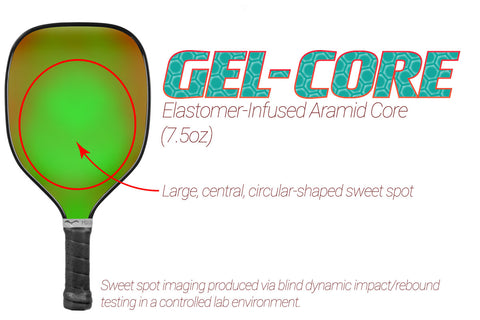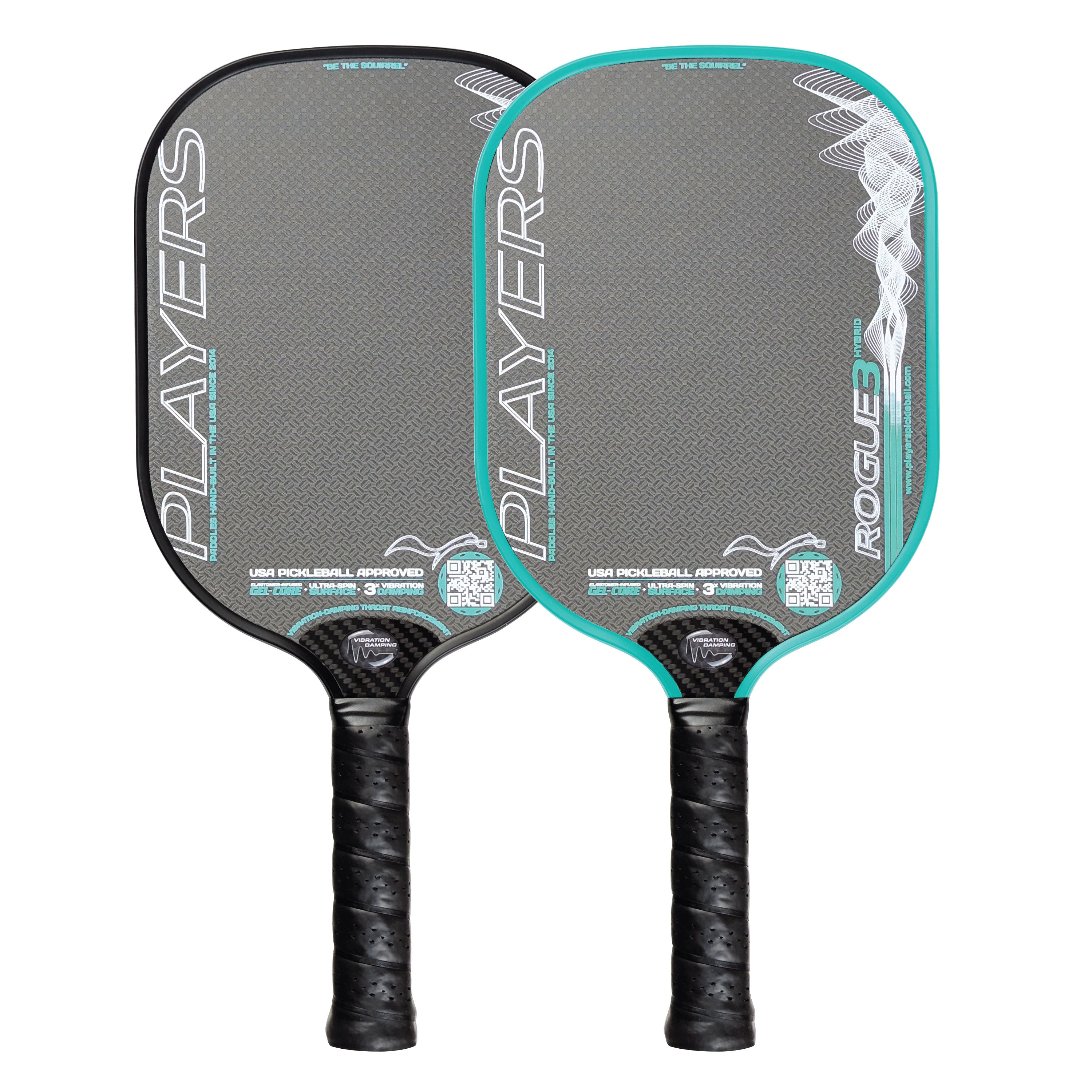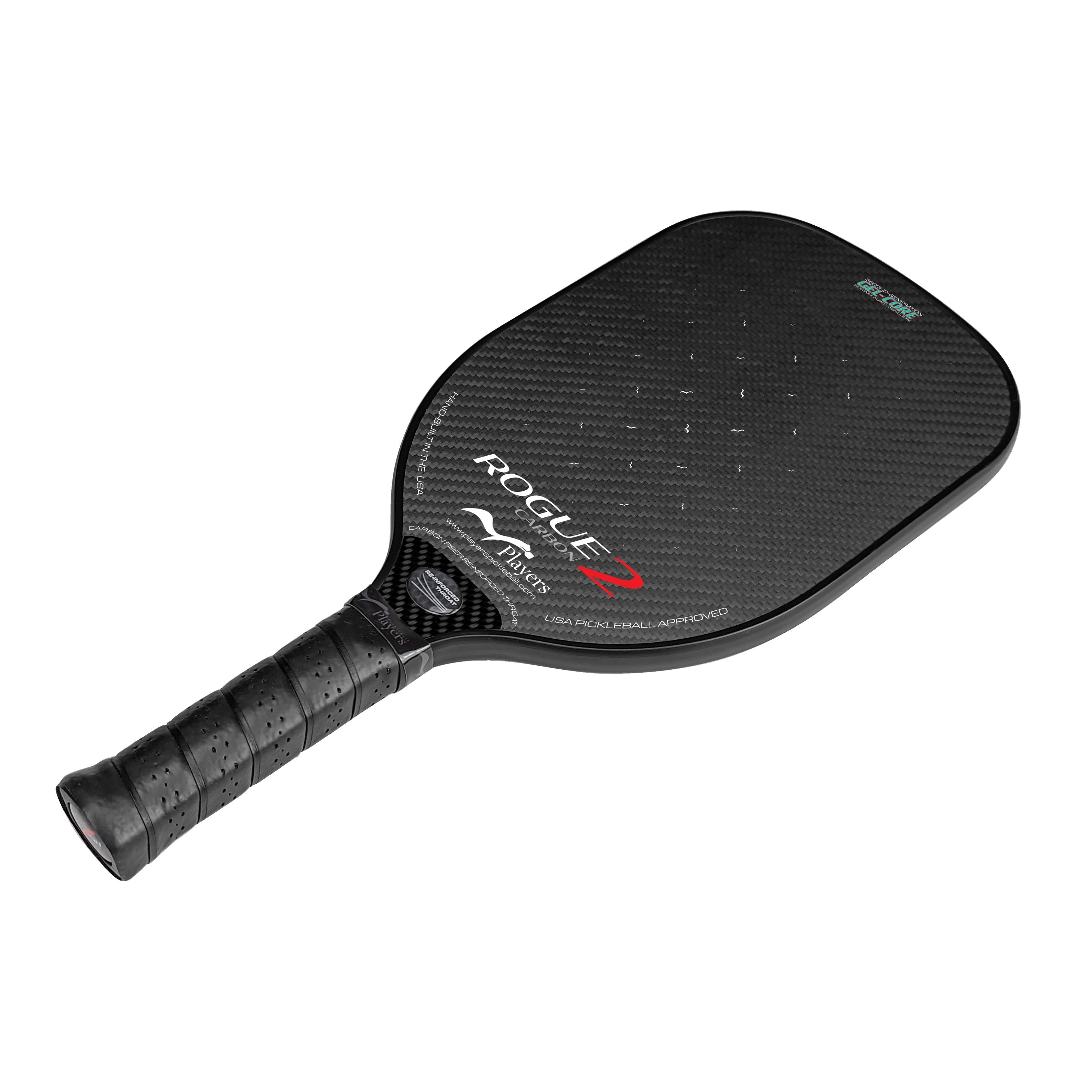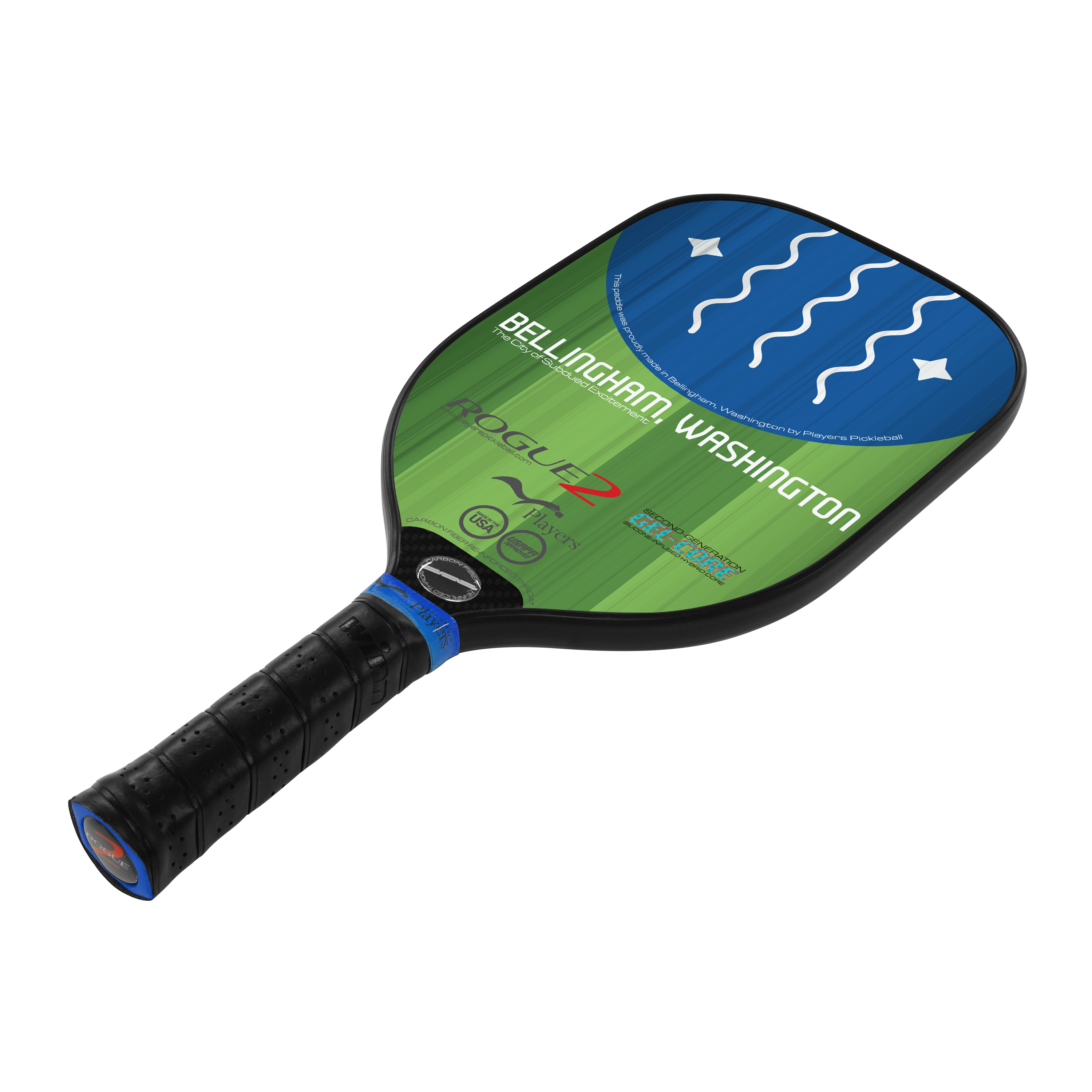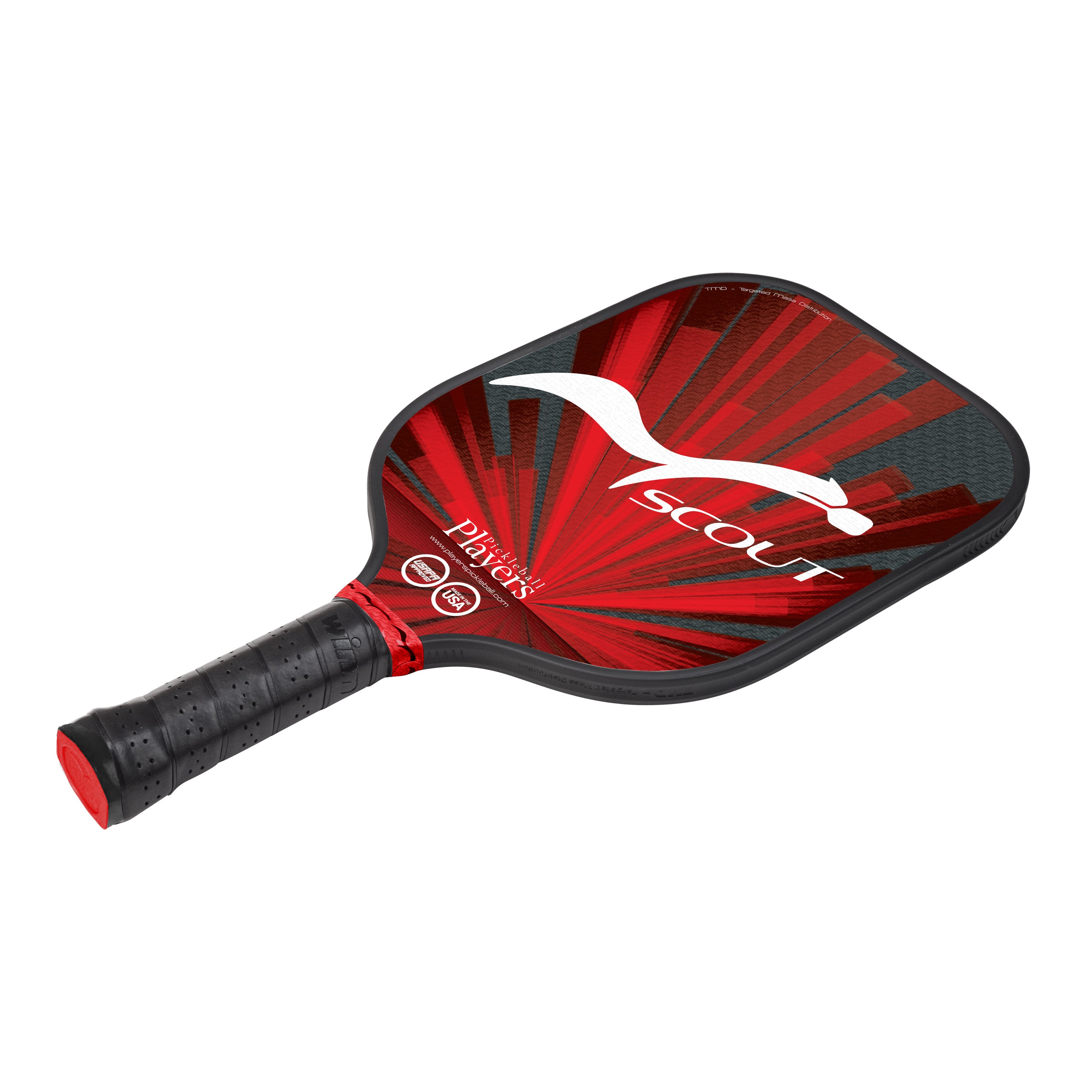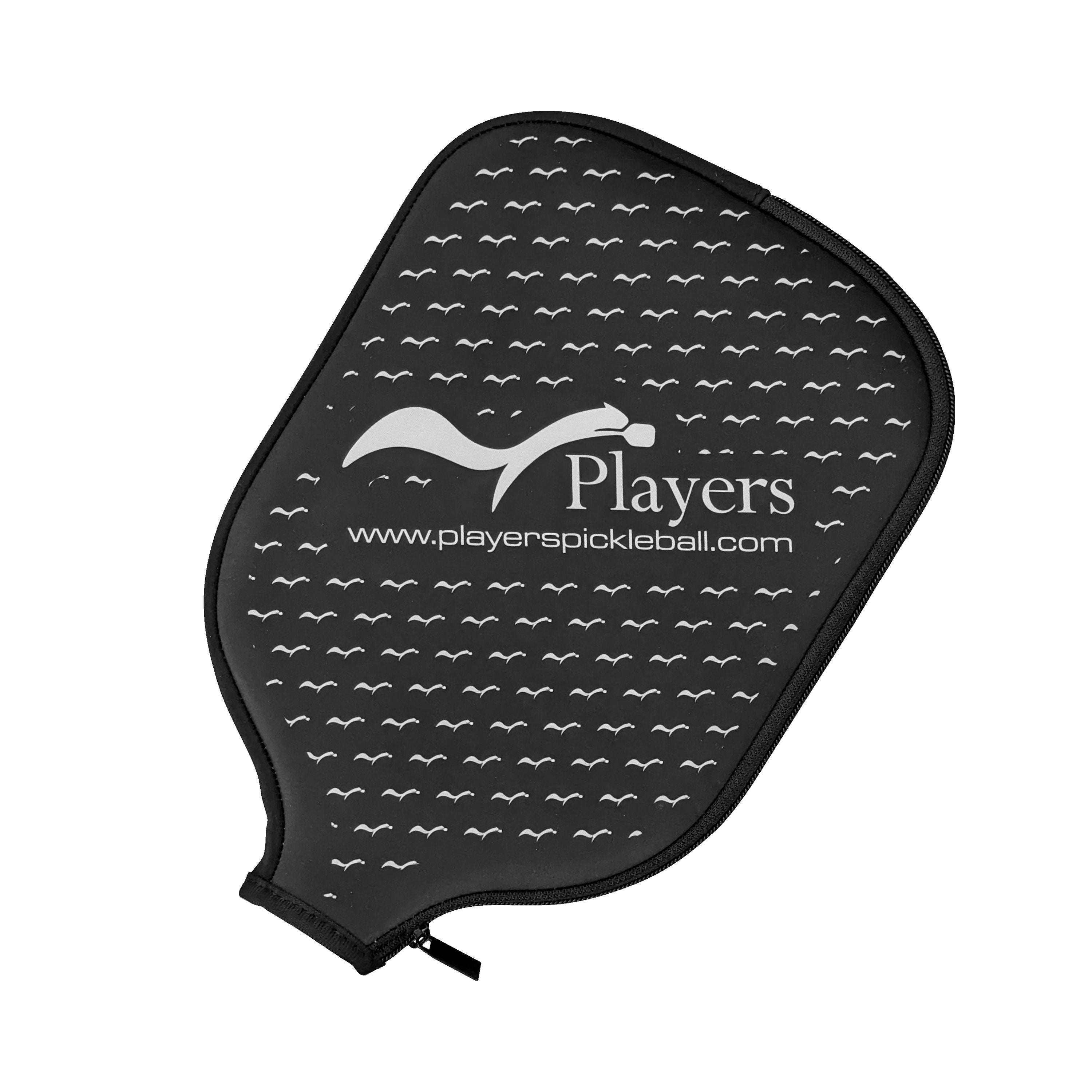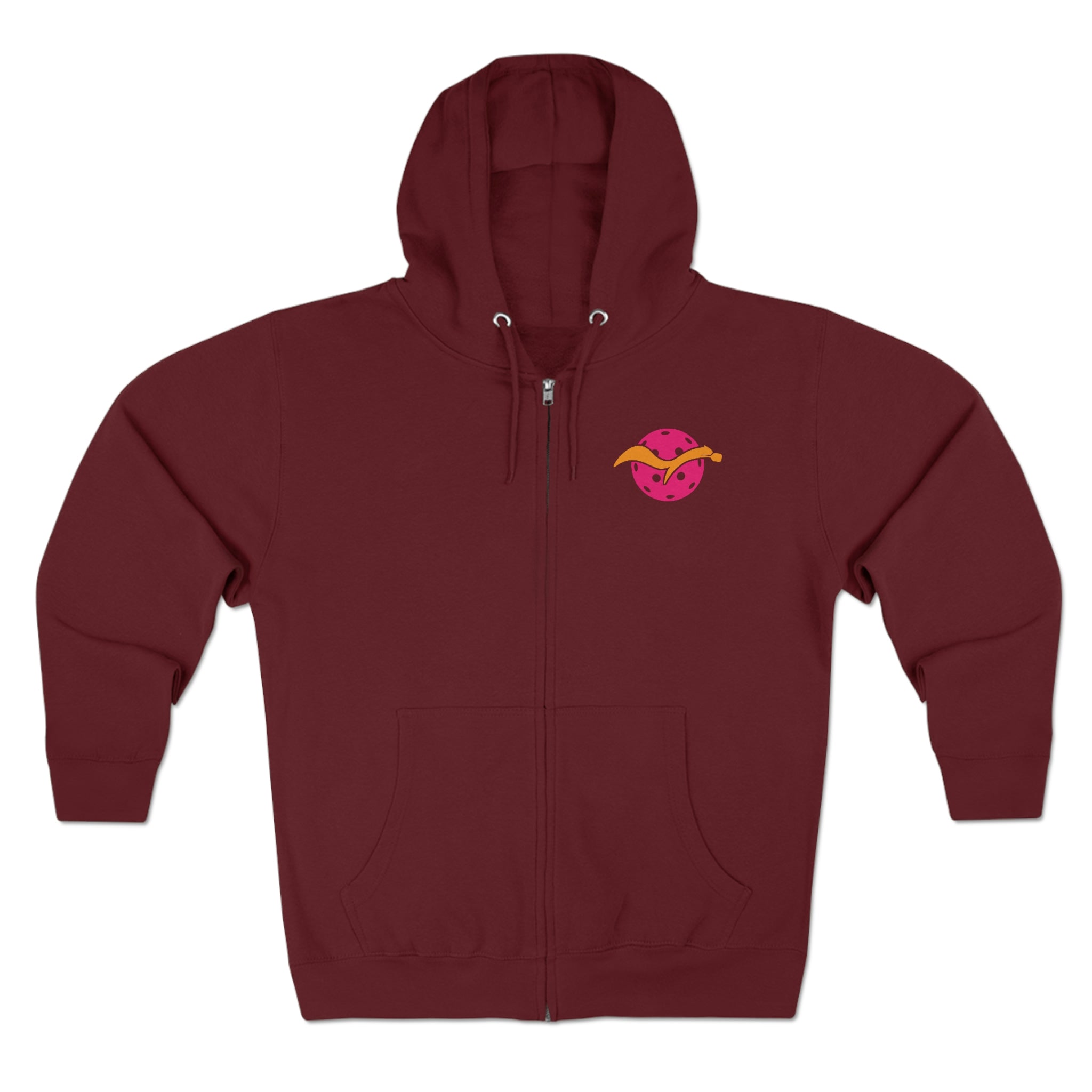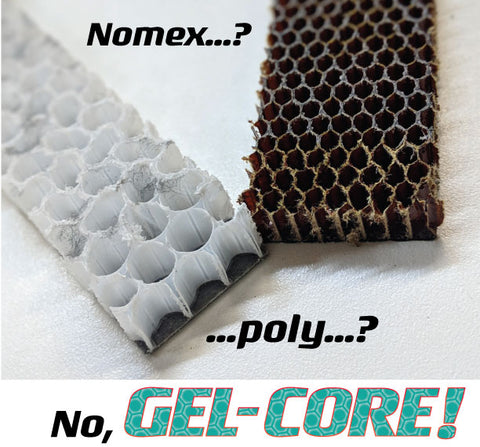
What is Gel-Core Technology?
Background
Most pickleball players, whether they know it or not, are familiar with the material known as "nomex". It's a paper-like material that when paired with resin and shaped into a honeycomb configuration becomes an ultralight, semi-rigid structure ideal for sandwiching between two flat surfaces to create a light and stiff panel. If you've ever been in a commercial airplane, you were likely surrounded by nomex as it's a popular material for building aircraft interior panels. Its light weight and rigid properties are exactly what you want in an aircraft, and as it happens, also makes for a really great pickleball paddle. While we don’t have exact numbers, it’s very likely that millions of pickleball paddles have been made with nomex cores, generally paired with carbon fiber skins. This nomex/carbon fiber (or graphite, as many in the industry call it), has been an industry standard for many years.
The nomex/carbon panel, however, is not without its drawbacks. For one, it's expensive. In many cases, the paddle core accounts for well over half of the total cost of a paddle. Many manufacturers are keen to move away from nomex for this reason alone. For two, nomex/carbon paddles can be rigid and unforgiving, resulting in a paddle that may be unpredictable and can make that high-pitched and loud "pop" sound that we all know so well (and is often complained about by our neighbors).

In recent years, polypropylene ("poly") cores have gained popularity and have served as a great solution to both of these problems. Poly cores are significantly less expensive than nomex/carbon cores and are much more forgiving--essentially "softer". The rapid rise of the poly core is a result of these two major factors. Poly cores, however, aren't without their own flaws. In general, they lack the lively feel of a nomex/carbon core simply because the material itself absorbs more of the ball's impact energy. They're also generally quite a bit heavier, meaning compromises are made in other areas of the paddle to keep the weight at an ideal level.
These two popular paddle materials got us thinking about ways we could combine the best properties of each, while minimizing their drawbacks. This eventually led us to our Gel-Core technology.
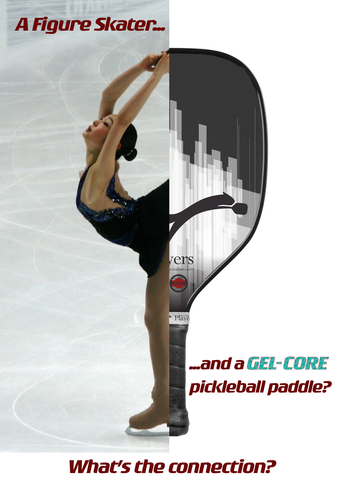
(Figure skater image used under Creative Commons CC0 1.0 Universal Public Domain Dedication usage)
Our solution is an entirely new hybrid material made possible by our proprietary manufacturing techniques. Without giving away too many secrets, we use a polypropylene honeycomb material that has been infused with an elastomeric material within the paddle face. We are able to fine-tune the infusion process to provide several benefits.
Gel-Core Benefits
-
Increased rotational inertia: For any physics buffs out there, you'll appreciate our attention to the importance of the "moment of inertia" in paddle design. Put simply, rotational inertia is the resistance of an object to rotation. If you imagine the handle of your paddle being a shaft, and the paddle face rotating around it, you can picture that when you hit a ball off-center, the paddle will try to rotate in your hand. That rotation absorbs the energy of the ball and results in less velocity on the return. We interpret this feeling as being "off the sweet spot". The more a paddle is willing to rotate, the more off-centered shots will lose velocity and in turn, we’ll interpret the sweet spot as being smaller. Now imagine a figure skater, spinning with arms extended. As the skater brings their arms in toward their bodies, the speed of their rotation increases, almost as if by magic! This is the result of the skater decreasing their rotational inertia--effectively becoming a paddle with a small sweet spot. As they extend their arms again, their spin slows immediately. Our elastomer-infused Gel-Core mimics this arms-extended figure skater. The mass of the paddle is pushed outward, increasing the paddle's rotational inertia and making it less willing to rotate with off-center hits. What you feel as a player is a paddle that is more stable and powerful with off-centered shots. This is often interpreted as a "larger sweet spot".

- Vibration damping: The Gel-Core reduces vibration unlike any other paddle. The damping characteristics of the elastomer infusion cuts the high-frequency vibrations you feel on ball impact, making for a paddle that lacks the harshness that paddles otherwise can have.
- Noise reduction of a poly-core paddle: Most players (and neighbors) agree that poly cores make for quieter paddles than nomex cores. As pickleball continues to gain popularity, we're all well aware of the potential for noise complaints. Our Gel-Core paddles are measurably quieter than nomex paddles and more on par with poly paddles but without the dull "thud" sound that they sometimes have.
The Results
At this point, all of this might just sound to you like clever marketing talk and if we were reading it, we'd probably feel the same way. That's exactly why we don't talk unless we have the data to back it up. It's part of our core credo at Players Pickleball. We test, analyze, redesign, and repeat the process until we have measurable improvements, not just on the court or in the lab, but both--and we never make claims unless we can back them up. So how, then, do we back up our claims about Gel-Core?
- Lab Test Results: We've developed and built several different test rigs that allow us to objectively measure a paddle's characteristics, free from any subjective bias. We can measure sound levels and frequencies, static and dynamic paddle flex, surface friction, static and dynamic failure points, acoustic frequency and decibel levels, and measure and map sweet spots in a way no other manufacturer has done before.
- Sweet Spot: The image below shows the sweet spot test lab results of the Gel-Core paddles against control samples that were the same shape, size, and weight.

- Acoustic Frequency: Most players (and neighbors) agree that the sport of pickleball can be a little loud. As paddle materials have evolved, so too has the sound of a paddle hitting a ball. It's generally agreed that a lower pitched paddle is more pleasant sounding than a higher pitched paddle. The elastomer-infusion process measurably lowers the frequency of the paddle, as shown here:
-
Double-blind Test Results: For as much as lab tests matter, they don't mean much if they don't translate into a paddle that players prefer to use over others. For this reason, once we felt we’d optimized the Gel-Core paddles in the lab, we performed double-blind tests in multiple cities with players of all skill levels. In these tests, our Gel-Core paddles outperformed control paddles almost across the board.
The results above show the Gel-Core (yellow) scoring significantly higher than the two control panels in almost every category! Importantly, when players were asked which paddle they preferred overall, the response was almost unanimously in favor of the Gel-Core paddle! -
USAPA Approved: All of our paddles have been approved by the USAPA for use in all USAPA-Sanctioned events.
With Gel-Core paddle technology, we've created a line of paddles unlike any others that demonstrably out-perform in lab testing and blind field testing that are within the USAPA guidelines and approved for tournament play. Best of all, they're available now at a price that won't break the bank! Check them out!



